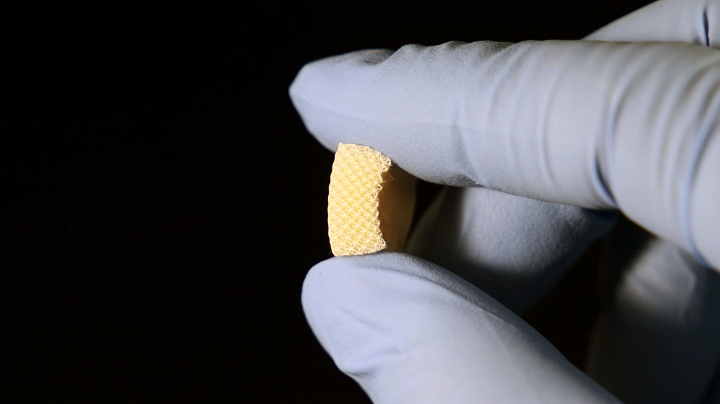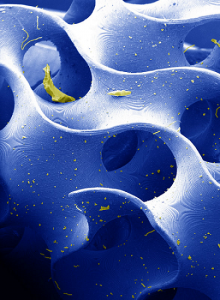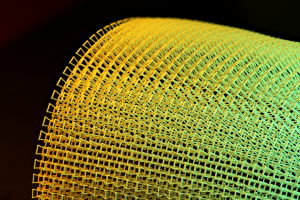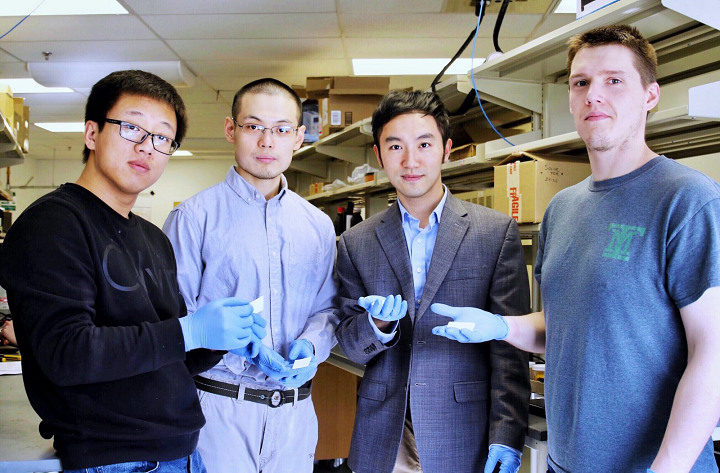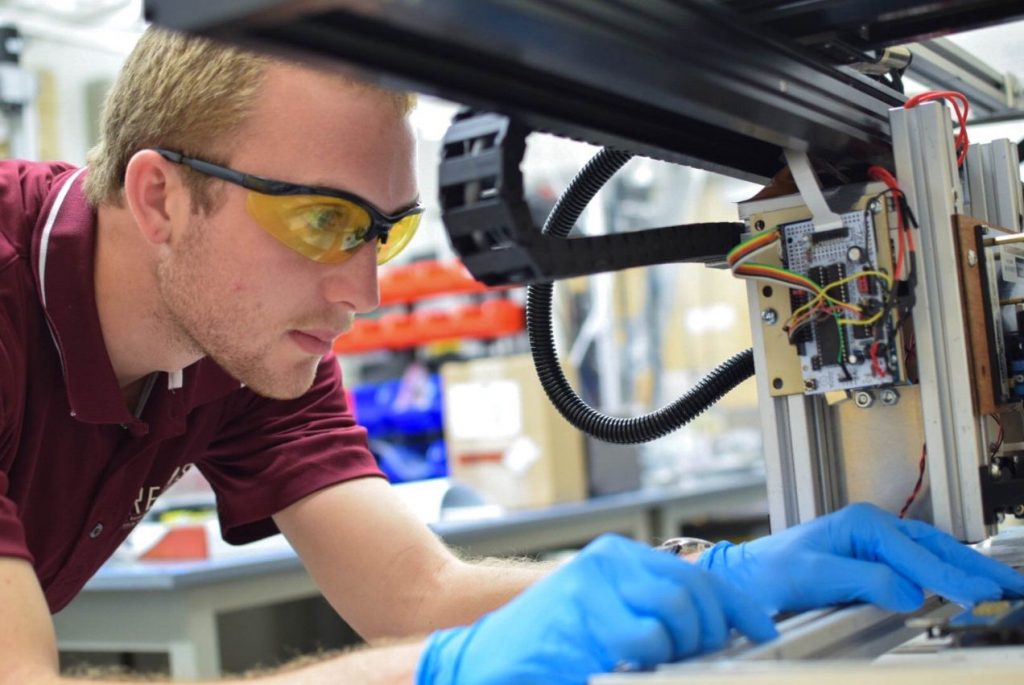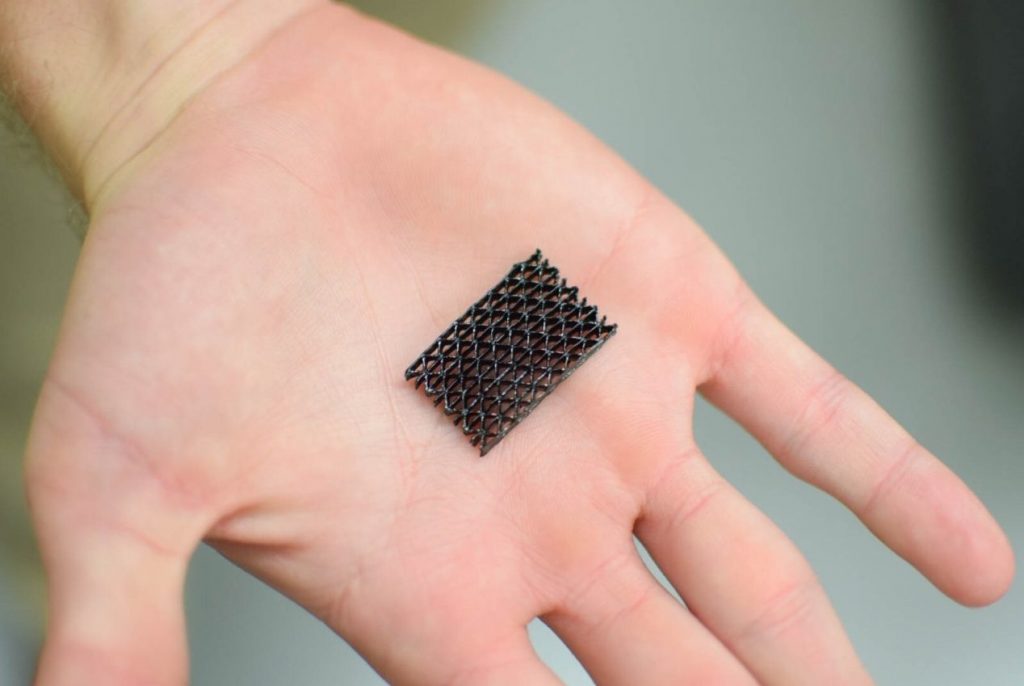Virginia Tech’s Source Form method eliminates need for 3D printer .stls
Virginia Tech inventor granted patent for 3D printing vending machine
Virginia Tech Researchers Using a New Method to Create 3D Printed Piezoelectric Materials
Originally discovered in the 19th century, piezoelectric materials, which convert stress and strain into electric charges, are in everything from musical greeting cards to cell phones. Piezoelectricity is electricity that results from pressure, and thanks to a new 3D printing method created by a group of researchers and mechanical engineers from Virginia Tech University, it may be possible to 3D print these types of materials in order to develop things like self-adaptive infrastructures and transducers, tactile sensors, and intelligent materials.
These materials are inherently brittle, as they’re made up of ceramic and crystal. They come in just a few shapes, and can only be manufactured in a clean room, so their potential hasn’t been explore too much, especially not in the 3D printing industry. But Xiaoyu ‘Rayne’ Zheng, a member of the university’s Macromolecules Innovation Institute and an assistant professor of mechanical engineering in the College of Engineering, and the rest of his team determined a new way to 3D print piezoelectric materials so they’re not restricted by shape or size, and can be custom-designed to convert stress, movement, and impact from any direction into electrical energy.
The team explains their research further in a paper, titled “Three-dimensional printing of piezoelectric materials with designed anisotropy and directional response,” which was recently published in the Nature Materials journal. Co-authors of the paper are Huachen Cui, Ryan Hensleigh, Desheng Yao, Deepam Maurya, Prashant Kumar, Min Gyu Kang, Shashank Priya, and Zheng.
Zheng, who has experience in 3D printing at both the nanoscale and microscale, and his team created a model that lets them “manipulate and design arbitrary piezoelectric constants,” which ends in the material responding to incoming forces and vibrations and generating, and moving, an electric charge, through a set of 3D printable topologies. This allows users to not only prescribe, but also program, voltage responses to be reversed, magnified, or suppressed in any direction.
“We have developed a design method and printing platform to freely design the sensitivity and operational modes of piezoelectric materials. By programming the 3D active topology, you can achieve pretty much any combination of piezoelectric coefficients within a material, and use them as transducers and sensors that are not only flexible and strong, but also respond to pressure, vibrations and impacts via electric signals that tell the location, magnitude and direction of the impacts within any location of these materials,” Zheng explained.
Natural crystals play a role in the manufacturing of piezoelectrics, as the orientation of atoms are fixed at the atomic level. The researchers created a substitute that mimics the crystal, but at the same time makes it possible to alter the lattice orientation.
“We have synthesized a class of highly sensitive piezoelectric inks that can be sculpted into complex three-dimensional features with ultraviolet light,” Zheng said. “The inks contain highly concentrated piezoelectric nanocrystals bonded with UV-sensitive gels, which form a solution — a milky mixture like melted crystal — that we print with a high-resolution digital light 3D printer.”
The 3D printed piezoelectric materials were demonstrated at a tiny scale, which measures just fractions of the diameter of a single human hair.
“We can tailor the architecture to make them more flexible and use them, for instance, as energy harvesting devices, wrapping them around any arbitrary curvature. We can make them thick, and light, stiff or energy-absorbing,” said Zheng.
“We have a team making them into wearable devices, like rings, insoles, and fitting them into a boxing glove where we will be able to record impact forces and monitor the health of the user.
The material is five times more sensitive than flexible piezoelectric polymers, and it’s possible to tune and produce its shape and stiffness as a block or a thin sheet.
Priya, the Associate VP for Research at Penn State and a former professor of mechanical engineering at Virginia Tech, said, “The ability to achieve the desired mechanical, electrical and thermal properties will significantly reduce the time and effort needed to develop practical materials.”
The researchers have kept busy 3D printing the material and demonstrating its applications as smart materials used to harvest mechanical energy, wrap around curved surface, and convert motion. But even beyond consumer electronics and wearables, Zheng believes their work could be used in robotics, tactile sensing, and intelligent infrastructure. Then, structures could be completely made of piezoelectric material, so they can sense, monitor, and locate vibrations, motions, and impacts.
In order to demonstrate their material’s applicability for sensing the locations of dropping impacts, while also absorbing impact energy, the team 3D printed a small smart bridge. Additionally, they created a smart transducer that can convert underwater vibration signals to electric voltages.
“Traditionally, if you wanted to monitor the internal strength of a structure, you would need to have a lot of individual sensors placed all over the structure, each with a number of leads and connectors. Here, the structure itself is the sensor — it can monitor itself,” said Cui, a doctoral student with Zheng.
[Source: Science Daily]
Discuss this and other 3D printing topics at 3DPrintBoard.com or share your thoughts below.
Virginia Tech 3D prints devices that generate electricity from impact
Virginia Tech Researchers 3D Print Kapton Using Direct Ink Writing
Last year, a group of Virginia Tech researchers developed a method for 3D printing Kapton, a foil-like polyimide that possesses excellent thermal and chemical stability and therefore is commonly used in insulation for aerospace applications. It also acts as an electrical insulator and is resistant to ultraviolet radiation. It doesn’t dissolve in solvents and has a degradation temperature of about 550°C.
“(Kapton) can withstand all kinds of harsh environmental insults: radiation, high temperature, chemical reagents,” said Timothy Long, a professor of chemistry and the director of Virginia Tech’s Macromolecules Innovation Institute (MII). “It’s one of these molecules that is the ultimate in terms of performance.”
Prior to last year’s study, Kapton was only available in thin two-dimensional sheets, like tape or the “gold foil” that wraps around satellites to insulate them, but the researchers then figured out how to 3D print the material using SLA. Now they have developed a second method for 3D printing Kapton: direct ink writing, or DIW. They detailed their research in a recent paper entitled “Ultraviolet-Assisted Direct Ink Write to Additively Manufacture All-Aromatic Polyimides.“
“If you think of caulking a bathtub or decorating a cake with icing, (DIW is) a very similar process,” said Daniel Rau, one of the co-authors and a Ph.D. student in the Design, Research, and Education for Additive Manufacturing Systems (DREAMS) Lab in the Department of Mechanical Engineering. “Because it’s so simple, (DIW) gives us incredible flexibility on the ink, synthesis, and the properties it has.”
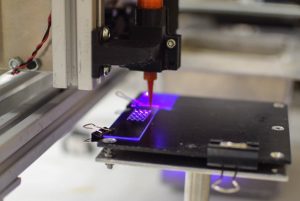 After 3D printing the material using direct ink writing, the printed parts had similar properties to commercially available Kapton film. They had similar mechanical properties up to 400°C, and their degradation temperature was 534°C. According to Rau, while SLA is better for 3D printing entire objects, direct ink writing is better for 3D printing different materials side by side.
After 3D printing the material using direct ink writing, the printed parts had similar properties to commercially available Kapton film. They had similar mechanical properties up to 400°C, and their degradation temperature was 534°C. According to Rau, while SLA is better for 3D printing entire objects, direct ink writing is better for 3D printing different materials side by side.
“All of the different additive manufacturing processes are like different tools in the workshop,” Rau said. “You have hammers and that has its strengths. You have saws and that has its strengths.”
In addition to multi-material 3D printing, the researchers can also now print Kapton directly onto an existing material using direct ink writing, said Christopher Williams, director of the DREAMS Lab and associate director of MII. They can also print the material on curved surfaces.
“As soon as we were able to print Kapton, people asked us about applications,” Williams said. “The answer we often gave was printed electronics, but that’s challenging to do in stereolithography. This new technique could really enable that as we look towards simultaneous printing of conductive materials and this excellent insulator.”
In last year’s study on SLA 3D printing, Jana Herzberger, a postdoctoral student in the Long Group, created a precursor polymer to Kapton in liquid form. The liquid wouldn’t work for direct ink writing because it wouldn’t hold its shape after extrusion. Instead, Herzberger created a resin with a consistency similar to peanut butter.
“When Dr. Williams challenged us to modify the resin for the direct ink write process, we all thought it would be rather straightforward,” Herzberger said. “It turned out that the ‘easy’ route didn’t work, and we had to make some modifications to the original resin. Often times, I synthesized a resin and studied its rheological properties [rheology is the study of how a matter flows or moves in the presence of deformation], and Danny tested if it performed in the printer as we predicted. It was a new experience for me to work with engineers, and I think we learned a lot from each other and improved our communication skills quite a bit.”
Herzberger and Rau both worked on finding the right balance of an ink that she could synthesize and he could print.
“We both had to meet in the middle and make concessions and communicate,” Rau said. “This was a great partnership — an iterative process — to make this ink printable. Neither of us had the knowledge to go from material creation to final part.”
Long’s and Williams’ groups worked closely together as well to create the new method.
“My group makes macromolecules and Chris’ group puts them into unique geometric shapes,” Long said. “It’s almost like one group working together to solve really complex questions like this.”
Discuss this and other 3D printing topics at 3DPrintBoard.com or share your thoughts below.
[Source/Images: Virginia Tech]

